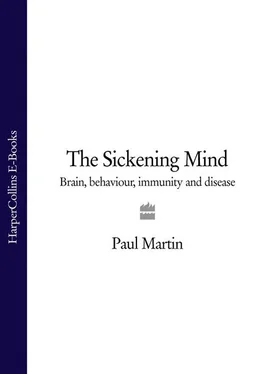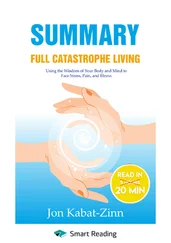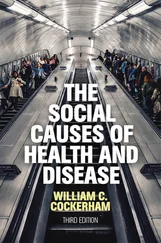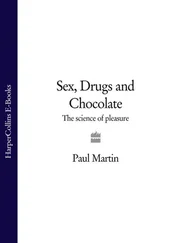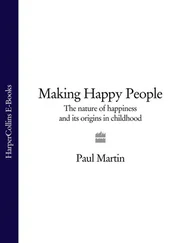1 ...8 9 10 12 13 14 ...25 Relatively minor traumatic events can also push up the odds of becoming ill. For example, Australian scientists found a marked increase in high blood pressure, gut disorders and diabetes among people who had been indirectly affected by a bushfire that occurred in southern Australia in 1983.
Long-term observations of normal families have shown that there is often an increase in family-related stress, or disruptive changes in family circumstances, in the period immediately before one or more family members develop infections. A number of studies of families in their home environments have unearthed associations between stressful conflicts and minor infectious illnesses such as coughs, colds, ’flu and sore throats. These stressful episodes tend to precede infections rather than follow them, implying that the stress contributes to the illness and not vice versa. In other words, it is not simply a matter of arguments arising because everyone is feeling ill and crotchety.
Research in the States has uncovered comparable links between stress and illness among children in rural Dominica. In the week following a high-stress event such as a big family upheaval, the risk of the children acquiring an infection of the upper respiratory tract increased by a factor of three.
For over thirty years scientists have been systematically exploring the idea that the risk of falling ill increases when we are exposed to a lot of disruptive changes or emotional turmoil. This research stemmed from the informal observations of certain perceptive doctors, who noticed that their patients often seemed to have experienced unusually large amounts of change and upset in the period before they fell ill. Further impetus came from a pioneering investigation of illness and absenteeism among the employees of the Bell Telephone Corporation in the 1950s. This indicated that employees with unsettled personal lives tended to suffer frequent bouts of illness and take more sick leave from work.
Suggestive observations such as these led psychologists to formulate the concept of life events. A life event is defined as any significant change in a person’s circumstances which requires them to make psychological and practical readjustments. The disruptive event can be either desirable or undesirable; the prime criterion is that it causes a degree of upheaval.
Examples of life events include the death of a partner or family member, divorce, marriage, starting a new job, moving house or financial problems. At the other end of the scale, minor upheavals such as family holidays and Christmas are also classified as life events. The basic hypothesis underlying this work is that any disruptive changes, whether desirable or undesirable, are potentially stressful and can increase our chances of falling ill.
Thousands of research projects have investigated the relationships between life events and health. The majority of these studies have used a standardized method for assessing life-event stress called the Social Readjustment Rating Scale. In its simplest form this involves asking each individual to record which of forty-three types of life event they have experienced over a specified period, usually between six months and two years.
Each type of life event is assigned a standard score according to its supposed severity, rated on a scale from o (least severe) to 100 (most severe). The maximum rating of 100 is awarded to the death of a spouse; divorce is rated 73; marriage, 50; changing to a different line of work, 36; moving house, 20; Christmas, 12; and so on. (Personally, I would rate Christmas at around 60, and anyone who has recently experienced the horrors of moving house may be excused for wondering at its modest rating.) A composite score is then calculated for each individual, taking account of both the total number of life events they have experienced and the relative awfulness of those life events. A high score can denote a few serious life events or a multitude of minor ones. 2
If it is true that life events act as risk factors for illness then people who register high life-event scores should, on average, have more illnesses than those whose lives have been undisturbed by change. Simple. By and large, this is what the research has found.
A seminal early investigation looked at the effects of life-event stress on US Navy personnel during the Vietnam War. The results showed that individuals with the highest life-event scores suffered almost twice the number of illnesses over the following months as those with low scores. In another study scientists asked young men in a navy submarine training establishment to record the life events they had experienced over the previous twelve months; again, the incidence of life events correlated with subsequent illness.
The general conclusion from several thousand such studies is that people who have been exposed to lots of life-event stress have a slightly greater risk of illness. This increased risk applies across the board and seems to encompass virtually every form of ailment and disease under the sun, ranging from headaches, common colds, allergies and inflammation of the gums to mental illness, coronary heart disease, leukaemia, diabetes, tuberculosis and multiple sclerosis. Life-event stress also has an impact on childbirth; women who register high stress ratings during the year or so before pregnancy tend to give birth to babies with slightly lower birth weights and a slightly poorer overall state. Life events are even associated with an increased risk of minor accidents and sports injuries.
As well as suffering more episodes of illness, people with high life-event scores also tend to be ill for longer, have more severe symptoms and take longer to recover.
Not surprisingly, the adverse effects of life events are generally worse when the life events are severe, undesirable and clustered together in time. In the early days of life event research it was widely assumed that ‘good’ life events, such as getting married or starting a new job, were potentially just as damaging to health as ‘bad’ life events of comparable disruptiveness. However, more recent research has tended to support the common-sense assumption that, other things being equal, undesirable life events are inherently more damaging than desirable ones.
It has to be said that the link between life events and later illness is not as neat and simple as it sometimes appears. Some of the research on life events has been justifiably criticized for a variety of reasons. This is not the right place to debate the abstruse technicalities of research methodology. Nonetheless, the difficulties inherent in life event research are of broader relevance and therefore merit our attention.
First of all, the statistical correlation between life events and illness is highly consistent but it is also fairly weak. Life events do have a bearing on health, but not a very major bearing. Typically, life events account for only about 10–15 per cent of the total variation in the incidence of illness. A number of those who are exposed to stressful life events become ill, but most do not. Conversely, it is possible to fall ill despite living a life of unruffled stability. A phenomenon that is highly significant in a strictly statistical sense – meaning that the patterns in the data are more than just chance variations – may not necessarily be highly significant in a clinical or scientific sense.
A second fundamental point is that correlation is not the same as causation. The existence of a statistical association between two things is not proof that one of them causes the other. The population of the world and the age of the current pope are correlated, but there is no causal connection between the two. They both happen to be independently related to a third variable – time. So the correlation between life-event scores and illness does not by itself prove that life events are a direct cause of illness. The causation might even work the opposite way round; that is, chronic illness might conceivably precipitate life events. For instance, someone’s marriage or career might run into problems because they are ill. And it may be the case that things which are classified as life events, such as sexual problems or changes in sleep patterns, could in fact be symptoms of an existing but undiagnosed illness.
Читать дальше
